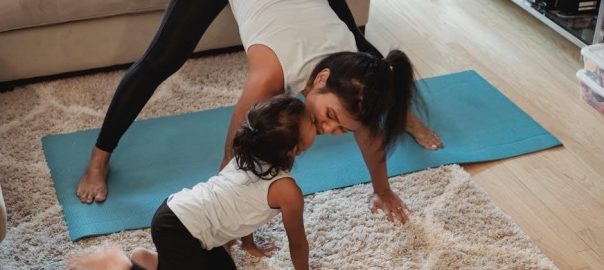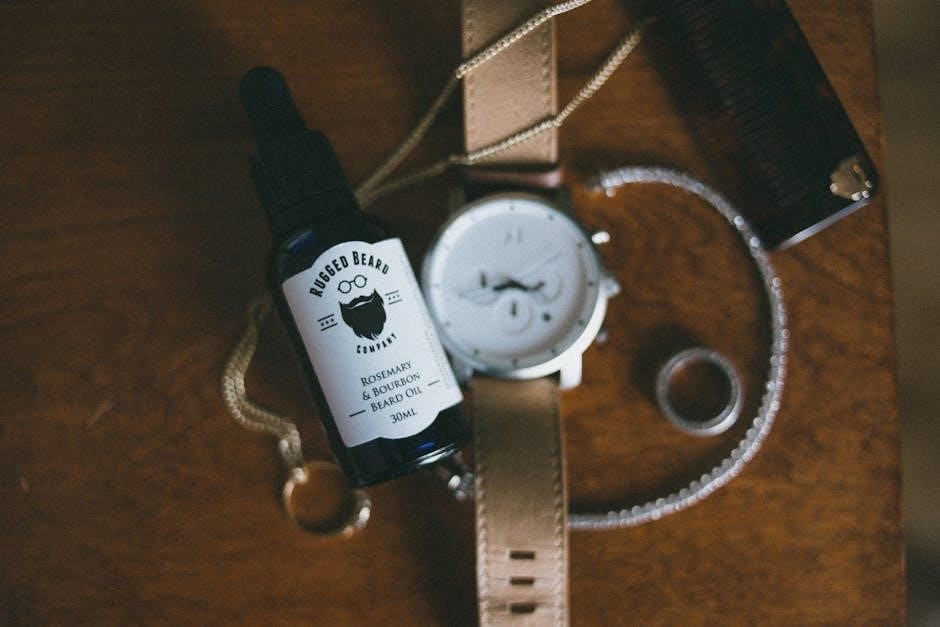The Bauer Fit Guide offers a comprehensive solution to find your ideal skate fit, combining cutting-edge technology like the 3D Scanner and Fit Lab for personalized recommendations, ensuring optimal performance and comfort on the ice.
Overview of the Bauer Fit Guide
The Bauer Fit Guide is an innovative tool helping players find their ideal skate fit. It uses the Bauer 3D Scanner and Fit Lab to analyze foot shape, size, and pressure points. This data recommends the best skates and insoles for optimal performance and comfort. Suitable for all skill levels, the guide offers personalized solutions to enhance the on-ice experience. By simplifying skate selection, players can focus on their game, ensuring they perform at their best with properly fitting equipment. Additionally, it helps maintain their edge by tailoring skates to specific needs, boosting comfort and performance for confident and precise skating.
Importance of Proper Skate Fit
Proper skate fit is crucial for optimal performance, comfort, and injury prevention. Ill-fitting skates can cause discomfort, blisters, and even hinder skating ability. A well-fitting skate provides the necessary support and stability, allowing players to skate longer and perform at their best. The Bauer Fit Guide helps ensure precise sizing, addressing individual foot shapes and skating styles; Correct fit enhances power, speed, and agility on the ice, while also reducing fatigue. Bauer’s technology, like the 3D Scanner and Fit Lab, offers personalized recommendations for the best fit, ensuring players can focus on their game without distractions. Proper fit is essential for maximizing potential and enjoying a superior skating experience.
What the Bauer Fit Guide Offers
The Bauer Fit Guide provides a detailed, personalized approach to finding the perfect skate fit. It utilizes advanced technologies like the Bauer 3D Scanner and Fit Lab to measure foot dimensions and recommend optimal skate sizes. The guide also introduces the Performance Fit System, categorizing fits into Fit 1, 2, and 3 for tailored comfort and support. Additionally, it offers customization options through MyBauer Skates, allowing players to create unique, high-performance skates. The guide includes resources for measuring at home, converting sizes, and understanding the differences between various fit technologies. By combining innovation and personalization, the Bauer Fit Guide ensures every player achieves the best possible fit for enhanced performance and comfort on the ice.

Key Technologies in the Bauer Fit Guide
The Bauer Fit Guide features cutting-edge technologies like the Bauer 3D Scanner and Fit Lab, providing precise foot measurements and personalized skate recommendations for optimal performance.
Bauer 3D Scanner
The Bauer 3D Scanner is an innovative tool designed to measure foot dimensions accurately, ensuring a precise fit for Bauer skates. By targeting seven key points on the foot, it determines the ideal length and width, providing personalized recommendations. This technology partners with Aetrex, a leading insole company, to enhance comfort and performance. The scanner captures detailed data, allowing for custom mold creation and optimal skate selection. It ensures that each player’s unique foot shape is accommodated, leading to improved skating efficiency and comfort. This advanced system is a cornerstone of Bauer’s commitment to delivering the best fit, enabling players to perform at their best on the ice.
Bauer Fit Lab
The Bauer Fit Lab is a revolutionary diagnostic system that captures 16 unique 3D foot measurements, underfoot pressure, and weight distribution. It analyzes movement patterns to provide tailored skate and orthotic recommendations. Unlike the 3D Scanner, the Fit Lab offers a more comprehensive analysis, including contour maps and individualized suggestions for insoles. This technology helps players achieve optimal support and performance by addressing specific foot characteristics, such as over-pronation or high arches. The Fit Lab goes beyond basic sizing, creating a holistic approach to skate fitting that enhances comfort, stability, and overall skating performance. It’s a significant advancement in personalized fit technology, ensuring every player’s needs are met precisely.
Differences Between Bauer 3D Scanner and Fit Lab
The Bauer 3D Scanner focuses on basic foot profiling, measuring length and width, while the Fit Lab offers advanced diagnostics with 16 measurement points and underfoot pressure analysis. The Fit Lab also evaluates movement and weight distribution, providing orthotic recommendations. It captures more detailed data by scanning both standing and walking positions, unlike the static 3D Scanner. The Fit Lab’s comprehensive insights enable better customization, making it ideal for precise fit and performance needs, whereas the 3D Scanner is more suited for initial sizing. Both tools aim to enhance skating performance but cater to different levels of customization and detail.

Bauer Performance Fit System
Bauer’s Performance Fit System revolutionizes skate fitting by replacing traditional D and EE widths with Fit 1, 2, and 3, offering tailored comfort and performance for every player.
Understanding Fit 1, 2, and 3
Bauer’s Performance Fit System introduces three distinct fit profiles: Fit 1, Fit 2, and Fit 3. Fit 1 is designed for narrower feet, offering a snug, responsive feel ideal for quick maneuvers. Fit 2 provides a medium width, balancing comfort and support for players with average foot dimensions. Fit 3 accommodates wider feet, ensuring maximum comfort without sacrificing performance. This system replaces traditional D and EE widths, offering a more personalized approach to skate fitting. By categorizing fit into these three options, Bauer ensures that players of all foot shapes can find skates that enhance their on-ice performance while maintaining comfort and support. This innovative approach simplifies the fitting process, helping players focus on their game.
How the Performance Fit System Works
The Bauer Performance Fit System utilizes advanced scanning technology to analyze foot dimensions and recommend the ideal skate fit. By scanning your feet using the Bauer 3D Scanner or Fit Lab, the system captures precise measurements, including length, width, and pressure points. This data is then used to determine whether a Fit 1, Fit 2, or Fit 3 profile best suits your foot shape. The system replaces traditional width categories (D and EE) with these three fit options, ensuring a more personalized and accurate fit. Players can then use these recommendations to select stock skates or customize their MyBauer Skates for optimal performance and comfort on the ice.
Benefits of the Performance Fit System
The Bauer Performance Fit System enhances comfort, performance, and accuracy for players of all levels. By replacing traditional width categories with Fit 1, 2, and 3, it offers a more personalized fit tailored to individual foot shapes and skating styles. This system ensures better support and reduces discomfort, allowing players to focus on their game. The precise fit also improves skating efficiency and responsiveness, making it easier to perform at peak levels. Additionally, the system supports customization options, enabling players to choose the fit that best suits their needs. Overall, it delivers a more enjoyable and effective skating experience, combining comfort and performance seamlessly.

Customization Options with MyBauer Skates
MyBauer Skates offer unparalleled customization, allowing players to create one-of-a-kind skates tailored to their preferences, with options for color, material, and fit based on their Bauer Fit Lab scan.
How to Use Your Bauer Fit Lab Scan for Custom Skates
Using your Bauer Fit Lab scan for custom skates is a seamless process that ensures a tailored fit. After completing the scan, the system provides detailed foot measurements, including length, width, and pressure distribution. These insights are used to recommend the ideal skate model and size for your foot shape and skating style. With MyBauer, you can then customize your skates by selecting from various colors, materials, and options like steel type and insoles. The scan data also helps in crafting a pair of Custom or Pro Custom skates, offering a truly personalized experience. This approach guarantees that your skates are built specifically for your feet, enhancing comfort, performance, and overall skating efficiency.
MyBauer Skates: Custom vs. Pro Custom
MyBauer Skates offers two distinct customization options: Custom and Pro Custom. The Custom option allows you to personalize your skates with a variety of colors, materials, and components, ensuring a unique look and feel tailored to your preferences. Pro Custom takes it a step further by incorporating your Bauer Fit Lab scan data, providing a skate built specifically to your foot’s measurements and skating needs. While both options deliver exceptional performance and comfort, Pro Custom is designed for elite players seeking the ultimate fit and responsiveness. Both choices ensure that your skates are not only visually unique but also optimized for your on-ice performance, making MyBauer a top choice for discerning players.
Personalization Options for MyBauer Skates

MyBauer Skates offers extensive personalization options, allowing players to create a truly unique pair tailored to their preferences and performance needs. You can choose from a wide range of colors and materials for the boot, tongue, and laces, ensuring a personalized aesthetic. Additionally, the option to customize the steel and holders enables you to fine-tune your skate’s performance characteristics, such as glide and agility. The Bauer Fit Lab scan data can also be integrated into your design, ensuring a precise fit. With hundreds of customization combinations, MyBauer Skates empowers players to craft a one-of-a-kind pair that reflects their individuality while delivering peak performance on the ice.

How to Determine Your Skate Size
Use the Bauer Fit Guide to measure your foot length and width, ensuring accurate sizing for optimal performance and comfort on the ice with Bauer skates.
Using the Bauer Fit Guide at Home
To determine your skate size at home, use a ruler or printable size guide from the Bauer Fit Guide. Measure your foot length and width, ensuring accuracy for the best fit. Stand barefoot on the ruler, keeping your heel against a wall. Record the longest and widest points of your foot. Compare these measurements to Bauer’s size chart to find your ideal skate size. This method ensures comfort and performance without visiting a store. For precise results, consider using both feet and averaging the measurements. Proper sizing is crucial for optimal skating performance and comfort, making the Bauer Fit Guide an essential tool for all players.
How to Measure Your Foot for the Best Fit
Measuring your foot accurately is key to finding the perfect skate fit. Start by placing your foot on a flat surface, ensuring your weight is evenly distributed. Use a ruler to measure the length from the back of your heel to the tip of your longest toe. For width, measure the widest part of your foot, typically just below the toes. Use a flexible measuring tape for precise width measurement. Compare these measurements to the Bauer Fit Guide chart to determine your skate size. Ensure both feet are measured, as they may differ slightly. Accurate measurements guarantee a comfortable and performance-enhancing fit, essential for any player’s success on the ice.
Converting Your Measurements to Bauer Skate Sizes
To convert your foot measurements to Bauer skate sizes, start by measuring the length and width of your foot using a ruler or tape measure. Record the longest length from heel to toe and the widest width across the ball of your foot. Refer to the Bauer Fit Guide chart, which provides corresponding skate sizes based on these measurements. Ensure accurate alignment by comparing your length and width to the chart’s scale. This method helps determine the ideal skate size for optimal comfort and performance. Bauer’s sizing system is designed to match your foot dimensions precisely, ensuring a snug and supportive fit. Proper conversion is essential for maximizing both comfort and skating efficiency on the ice.

Common Questions About Bauer Skate Fit
Players often ask if Bauer skates break in over time, how to ensure the best fit without baking, and whether the Fit Guide works for other brands.
Do Bauer Skates Break in Over Time?
Bauer skates are designed to provide a precise fit, but they may mold slightly over time as they adapt to your foot shape. While baking can accelerate the break-in process, many players find that Bauer skates become more comfortable naturally with use. Proper sizing and fit, as determined by the Bauer Fit Guide, minimize the need for extensive break-in. The Bauer 3D Scanner and Fit Lab technologies ensure a tailored fit, reducing discomfort and allowing the skates to perform optimally from the start. Regular use on the ice helps the skates conform to your feet, enhancing both comfort and performance over time.
How to Ensure the Best Fit Without Baking
Ensuring the best fit without baking requires precise sizing and proper use of Bauer’s technologies. The Bauer Fit Guide recommends using the 3D Scanner or Fit Lab to get accurate measurements, ensuring your skates match your foot shape. Wearing thin, moisture-wicking socks during fittings can help replicate on-ice conditions. Skates should feel snug but not tight, with minimal movement. Bauer’s Performance Fit System offers three fit profiles—Fit 1, 2, and 3—tailored to different skating styles. Regular wear helps the skates mold naturally to your feet. Additionally, considering custom options like MyBauer Skates can provide a personalized fit without the need for baking, ensuring optimal comfort and performance from the start.
Can You Use the Bauer Fit Guide for Other Brands?
While the Bauer Fit Guide is primarily designed for Bauer skates, its principles can provide general insights into skate fitting. However, due to differences in sizing and fit systems among brands, direct application to other manufacturers may not be precise. Bauer’s 3D Scanner and Fit Lab are calibrated specifically for their skate models, ensuring optimal results for Bauer products. For other brands, it’s best to use their respective fit guides or consult their sizing charts. The Bauer Fit Guide remains an excellent resource for understanding fit principles, but for non-Bauer skates, relying on the manufacturer’s guidelines will ensure the best results.

Bauer Fit Guide for Different Skill Levels
The Bauer Fit Guide tailors recommendations for beginners, intermediate, and advanced players, ensuring optimal support, mobility, and customization for each skill level, enhancing performance on the ice.
Fit Recommendations for Beginners
For beginners, the Bauer Fit Guide emphasizes comfort and support to build confidence on the ice. It recommends a snug fit to prevent blisters and promote stability, while allowing enough room for toes to wiggle. The guide suggests opting for skates with a stiffer boot to help maintain proper skating posture and reduce fatigue. Additionally, it highlights the importance of proper foot support through customizable insoles and the right sock choice. Beginners are encouraged to use the Bauer Fit Lab scan for accurate sizing and explore entry-level skate models designed for ease of use. This ensures a comfortable and enjoyable skating experience.
Fit Recommendations for Intermediate Players
For intermediate players, the Bauer Fit Guide recommends balancing performance and comfort to enhance skating efficiency. It suggests using the Bauer 3D Scanner or Fit Lab for precise measurements to ensure a tailored fit that supports advanced techniques. Intermediate players benefit from skates with a snug, responsive fit, allowing for better control and agility. The guide advises considering the Performance Fit System, which offers Fit 1, 2, or 3 options, to match individual skating styles and preferences. Additionally, intermediate players are encouraged to explore customizable options like insoles and steel choices to optimize performance. Proper fit ensures improved stability, faster strides, and better overall skating dynamics, helping players take their skills to the next level.
Fit Recommendations for Advanced Players
For advanced players, the Bauer Fit Guide emphasizes precision and responsiveness to maximize performance. The Bauer 3D Scanner and Fit Lab provide detailed measurements for a tailored fit, ensuring optimal support and flexibility. Advanced players typically prefer a tighter, more responsive fit, which the Performance Fit System achieves through Fit 1, offering a snug, high-performance profile. Customization options like MyBauer Skates allow for personalized features, such as premium insoles and high-performance steel, to enhance power and precision. By leveraging these tools, advanced players can maintain peak performance, with skates that align perfectly with their skating style and demands, delivering unparalleled control and efficiency on the ice.

Additional Accessories for Optimal Fit
Enhance your skating experience with accessories like skate socks for comfort and support, high-performance insoles for arch support, and steel options for superior glide and durability.
Importance of Skate Socks
Skate socks are a critical accessory for optimal performance and comfort. They reduce friction, preventing blisters and discomfort during intense skating sessions. Moisture-wicking fabrics keep feet dry, minimizing odor and bacteria growth. Thicker socks provide additional cushioning and support, while thin socks enhance feel and responsiveness. Properly fitted socks improve the overall fit of skates, ensuring better stability and control on the ice. They also help regulate foot temperature, keeping feet warm in cold rinks without causing overheating. Bauer recommends high-quality, breathable socks to maximize comfort and performance, making them a vital component of your skating gear. Investing in the right skate socks can elevate your skating experience and overall game performance.
How to Choose the Right Insoles
Choosing the right insoles is essential for maximizing comfort and performance in your skates. Insoles provide arch support, reduce foot fatigue, and prevent issues like over-pronation or high arches. Bauer recommends orthotic options designed to address specific foot needs, such as over-pronation, high arches, or forefoot pressure. When selecting insoles, consider your skating style, foot shape, and comfort preferences. Customizable options, like those from Aetrex, offer tailored support based on your Bauer Fit Lab scan. Properly fitted insoles enhance stability, control, and energy transfer, allowing you to perform at your best. They also complement the fit of your skates, ensuring a seamless skating experience. Prioritize insoles that align with your foot mechanics and skating demands for optimal results.
Steel Options for Enhanced Performance
Steel options play a crucial role in enhancing your skating performance. Bauer offers high-quality steel blades designed for durability and precision. The type of steel you choose can impact your skating efficiency, with options varying in hardness and edge retention. A sharper blade provides better grip on the ice, while a duller edge may offer more stability. Bauer’s steel options are tailored to different skating styles, whether you prioritize speed, agility, or control. You can also customize the hollow of your steel, which refers to the radius of the blade’s edge. A smaller hollow provides more bite, while a larger hollow allows for smoother gliding. Upgrading your steel can significantly enhance your skating performance, ensuring sharper turns and faster acceleration. Customizing your steel is an excellent way to optimize your skates for your specific needs.

Maintaining Your Bauer Skates
Proper care extends the life of your skates. Regularly clean and dry them, store in a cool, dry place, and check for wear and tear to ensure optimal performance and longevity.
How to Break in Your Skates Properly
Breaking in your Bauer skates properly is essential for comfort and performance. Start by wearing them around the house to allow the materials to mold to your feet gradually. If desired, use the baking method as per instructions to accelerate the process. Ensure the skates are snug but not overly tight to avoid blisters and maintain control. Wear quality skate socks for extra cushioning and support. After each use, let the skates air out to prevent moisture buildup and maintain their shape. Clean them regularly to keep them in top condition. Alternate between old and new skates during practices to allow gradual break-in. Patience and proper care will ensure your skates are comfortable and perform well on the ice.
Caring for Your Skates to Ensure Longevity
Proper care extends the life of your Bauer skates and maintains their performance. After each use, remove the insoles and let the skates air dry to prevent mold and odor. Regularly clean the exterior with a soft cloth and mild detergent, avoiding harsh chemicals that can damage materials. Store skates in a cool, dry place, away from direct sunlight, to prevent warping. Use a skate guard or protector when walking off the ice to protect the blades. Sharpen steel regularly to maintain edge quality, and check for damage or wear. Replace worn-out parts promptly. Use quality skate socks and insoles to wick moisture and reduce friction, ensuring optimal comfort and longevity.
When to Replace Your Skates
Your Bauer skates should be replaced when they show significant wear or no longer provide proper support and performance. Look for signs like a worn-out sole, broken or cracked boot materials, or excessively dulled steel edges that can’t be sharpened effectively. If the skates feel uncomfortable or cause blisters due to a breakdown in fit or padding, it’s time for a new pair. For elite players, skates may need replacing every 1-2 years due to heavy use, while recreational players can expect a longer lifespan. Always inspect for structural integrity and performance decline. Proper fit and sharp steel are essential for safety and skating efficiency, so don’t wait too long to invest in a new pair.
The Bauer Fit Guide ensures optimal performance and comfort by providing personalized skate fitting solutions through advanced technologies like the 3D Scanner and Performance Fit System, enhancing every skating experience.
Final Tips for the Best Fit
To achieve the best fit with your Bauer skates, start by using the Bauer Fit Guide tools, such as the 3D Scanner or Fit Lab, for precise measurements. Ensure you understand your skating style and preferences, as this impacts fit. Break in your skates gradually to avoid discomfort, and consider professional fitting if unsure. Regularly maintain your skates to preserve their shape and support. Additionally, explore customization options like MyBauer Skates to tailor your gear to your unique needs. Finally, remember that proper fit directly impacts performance, so prioritize comfort and support to elevate your game on the ice.
Why Proper Fit Matters for Performance
A proper fit in your Bauer skates is crucial for maximizing performance on the ice. Ill-fitting skates can lead to discomfort, reduced agility, and decreased control, ultimately hindering your ability to play at your best. With Bauer’s innovative technologies like the 3D Scanner and Fit Lab, you can ensure a precise fit tailored to your foot shape and skating style. This not only enhances comfort but also improves power transfer and maneuverability. A well-fitting skate supports your foot’s natural movement, allowing you to maintain balance and generate more speed. By prioritizing proper fit, you can elevate your game and perform with confidence and precision.






























